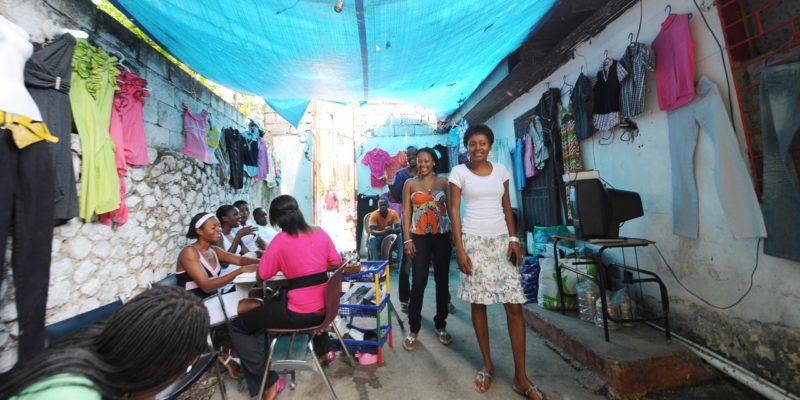
This year is Allure’s 30th Anniversary, and we’re celebrating by looking back at iconic moments in beauty from the past three decades. This story originally appeared in the March 2011 issue of the magazine.
When I was a little girl in Haiti, I lived next door to three sisters who did piecework for an American evening-gown company. The Esperance, or Hope, sisters were between 19 and 30 years old. One had skin the color of caramel, another was chocolate-hued, and one was the color of coffee, but they were all, in my eyes, stunningly beautiful. In order to pay for their living expenses and another sister’s education, the sisters strung together black sequins and beads that would then be attached to gowns they carried to a factory near the airport, gowns the sisters would occasionally claim to have seen in French and American women’s fashion magazines and identified as the glamorous outcome of their long hours of labor.
Every now and then, Lina, Dieula, and Anisi Esperance would invite a few neighborhood girls to help them with their work. For this we would get a cent or two, a minuscule percentage of the very low wage they were probably being paid. Helping meant sitting at their feet, between their triad of chairs and beneath the winnowing trays on which they had piled their materials, and catching, along with sprinkles of their conversations, any beads or sequins that would accidentally fall or be blown away. Sometimes the sisters would let us hold the needles and thread that they used to attach the sequins and beads to the gowns, and I would see in the gorgeous penny-colored eyes they all shared a great deal of pride in our efforts to replicate their carefully orchestrated movements. Though this was for me child’s play, each time they’d allow me to dip my hands into the pile of tiny metallic circles or even tinier cones, I would suspect an act of extreme generosity, an attempt at trying to teach me something about beauty and about life. They had no reason to believe that my life would not at some point end up like theirs. And I was too young to realize that they were working toward a different type of life altogether.
Unlike the sisters, the neighborhood we lived in was not beautiful. It was what people now insist on calling a slum. It had been beautiful once, though, several decades before, when my father first moved there. Years later, when we were both living in New York City, he would recall the small but charming houses, the tree-lined streets, the breathtaking views of Port-au-Prince harbor, and the cruise ships that regularly carried tourists to and from the area. But by the time the sisters and I were living there, Bel Air had large concrete houses crammed next to smaller shacks, and smelly cement alleys where our neighbors threw out dark soapy water after washing their clothes and discarded their trash in the muddy floods that raged through when it rained. The sisters’ salmon pink house was among the nicest in the neighborhood, though, and from the rooftop of my uncle’s house, I could easily look into their courtyard and marvel at the painstaking effort their work required.